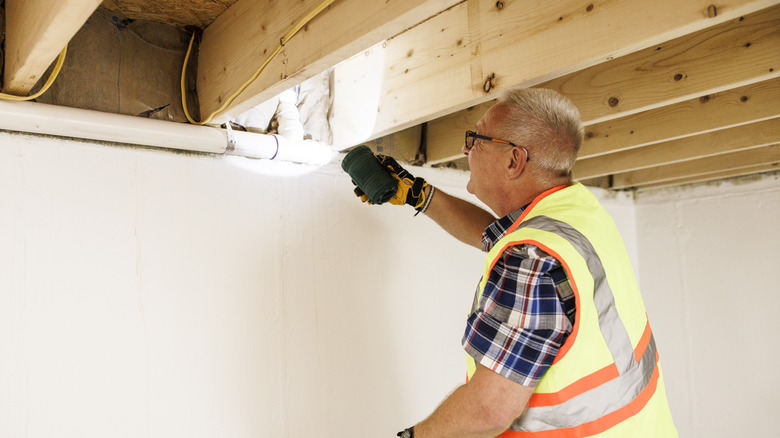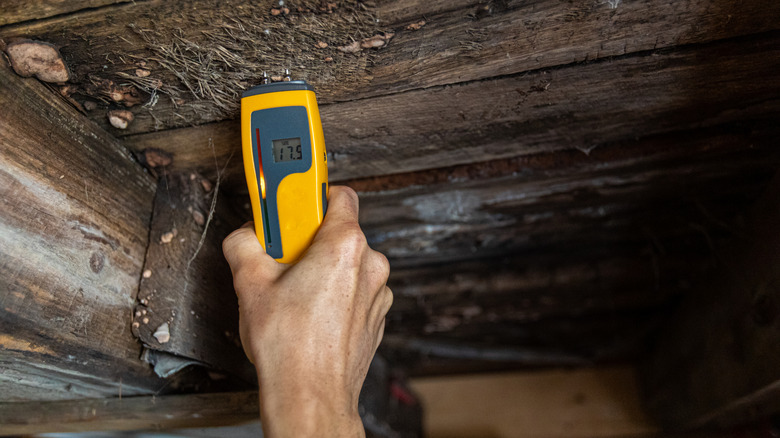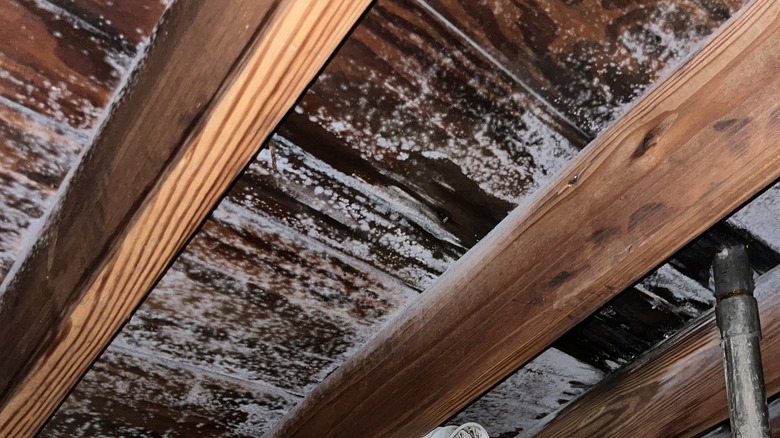Keep Your Floor Joists Safe And Mold-Free With These Effective Steps For Removal
We may receive a commission on purchases made from links.
Although floor joists are often out of sight, they play a really important role in the structural integrity of your home. However, they can be particularly vulnerable to mold, especially in damp and dark places like basements and crawl spaces. Mold on floor joists can weaken the wood, lead to health problems, and result in costly repairs if not handled quickly. Thankfully, with a bit of knowledge and effort, you can effectively remove mold and protect your joists.
The first step in addressing mold on your floor joists is to properly identify the mold problem. Mold thrives in environments where moisture accumulates, and ventilation is poor, making spaces like basements or crawl spaces the perfect breeding grounds. If you notice a musty odor, discoloration of your floorboards, or visible mold growth, it's time to take a closer look at your joists. Inspect the joists for any signs of the most common types of mold: black, green, or white mold. Don't panic if you find some — mold removal is manageable, but it requires immediate action.
The presence of mold is a clear indication of excess moisture, and before any removal can take place, you need to address the underlying moisture issue. This may involve fixing plumbing leaks, improving ventilation, or addressing water intrusion from the foundation. Once you've dealt with the moisture source, consider using a dehumidifier to remove excess humidity from the air and improve airflow in any enclosed spaces. It's essential to ensure that the moisture issue is resolved before starting removal.
Choose the right mold removal method
After assessing the extent of the mold problem and addressing the root cause of the moisture, you'll need to select the best method for removing the mold from your joists. For smaller, isolated areas of mold, you can often handle the cleanup yourself. Many homeowners use natural remedies, such as vinegar or hydrogen peroxide, both of which are effective mold-killers (just don't use them together). Vinegar can be diluted with water (50/50 split) and sprayed directly on the moldy areas of the joists. Then, use a brush to scrub and clean the mold. Make sure to wipe away any excess with a slightly damp cloth and ensure the area dries completely.
If you prefer a stronger solution, there are numerous commercial mold cleaners specifically designed for wood, such as the Concrobium Mold Control Aerosol. These products can be used safely on floor joists, following the manufacturer's instructions. But make sure you protect yourself during the cleaning process by wearing gloves, goggles, and a N-95 mask to prevent inhaling mold spores. If the mold growth is more extensive, DIY solutions might not be sufficient. Widespread mold infestations, especially those covering large areas of the joists, can pose serious risks to your health and the structural integrity of your home. In such cases, it's best to contact a professional mold remediation service. They have the tools and expertise needed to safely remove large amounts of mold without putting anyone at risk.
Prevent future mold growth on your joists
Once the mold has been successfully removed from your floor joists, the next step is making sure it doesn't come back. Prevention is key to keeping your home mold-free and your floor joists safe for the long haul. Begin by maintaining the ventilation in areas like basements or crawl spaces. Installing fans or vents can improve airflow and reduce the chances of moisture buildup, which is essential to mold prevention.
In addition to using a dehumidifier regularly, you may also want to consider sealing or insulating your crawl space to reduce the chance of moisture seeping in from the ground. Another effective strategy is to apply a mold-resistant sealant to your floor joists after cleaning. These sealants are designed to create a barrier on the wood that prevents mold spores from taking hold, giving you extra peace of mind.
Finally, make regular inspections part of your home maintenance routine. By keeping an eye on your floor joists, especially after heavy rainfall or during damp seasons, you can catch any early signs of mold before it becomes a significant issue. By following these steps, you can keep your floor joists mold-free and in good condition. With the right prevention measures in place, you can safeguard the structural integrity of your home and avoid costly repairs down the line.


